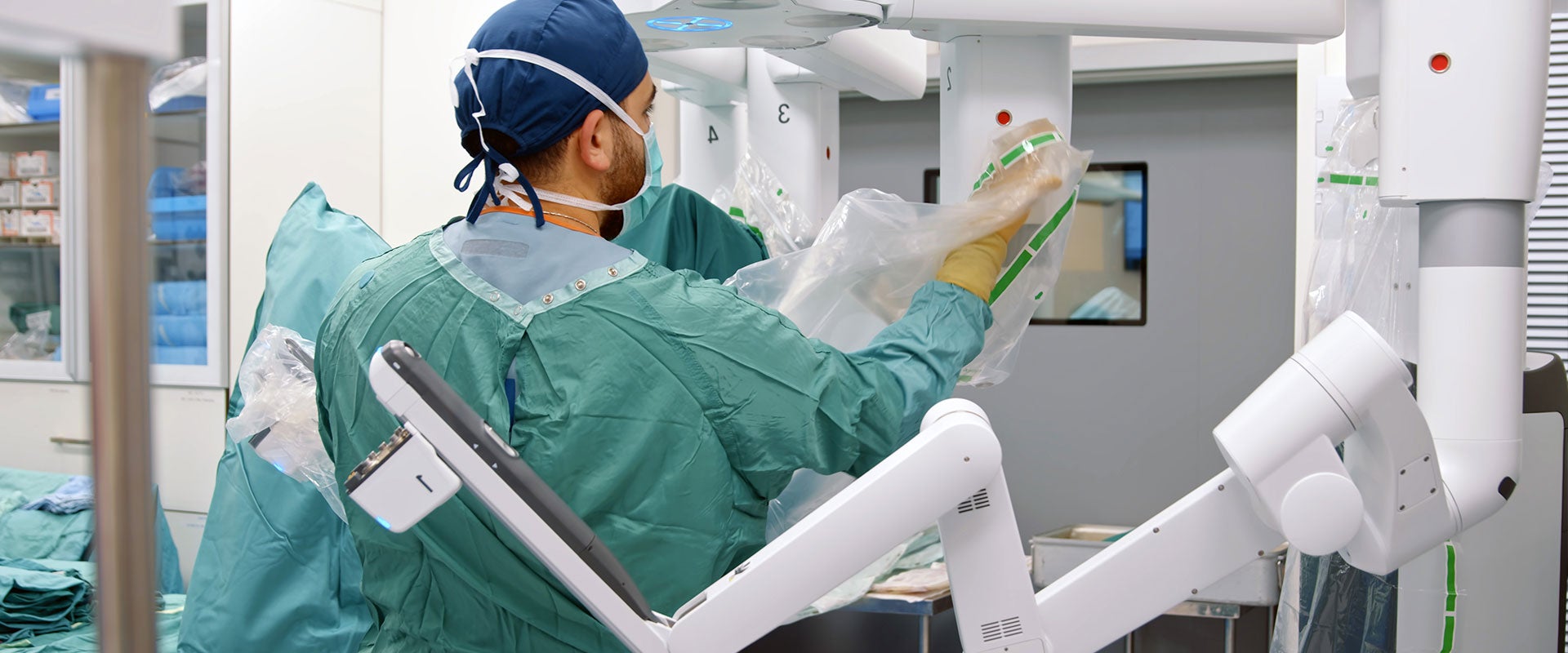
The Robotic-Assisted Surgery Opportunity in Latam
- Article

As the global landscape of surgical techniques evolves from open to robotic-assisted surgery (RAS), which leverages surgical robots outfitted with a camera and mechanical arms, the expiration of some first-generation patents has spurred global competition and reduced costs. As a result, access to RAS is increasing in emerging markets — including Latin America, with its supportive regulatory landscape. That said, unlocking the full value of RAS systems in the region requires circumventing multiple barriers, most notably a lack of training and limitations around both insurance coverage and capital.
Unlike open and minimally invasive surgery, with RAS, the surgeon views the internal tissues in high-magnification 3D through a camera. In addition to the greater visual magnification compared to laparoscopy, the technique enables numerous benefits for surgeons, including more precise movements and greater dexterity, which allows for procedures in low-access areas of the body and easier suturing. Patients, meanwhile, experience less scarring and reduced blood loss due to the smaller incisions made, which in turn require less time to fully heal, as well as less pain and discomfort in postop settings. Shorter operating times also mean a lower risk of complications.
RAS systems fall into three main categories: soft tissue, orthopedic and other specialized systems. Currently, RAS is used primarily for soft tissue surgeries, namely OB-GYN, urologic and general surgical procedures such as gastroenterology. Yet even in general surgery there remains significant room for growth of RAS use.
The global installed base of soft tissue RAS systems is expected to increase by some 15% annually through 2025 due to a combination of increased adoption, a broader range of surgical applications and sales from new market entrants. Patents held by Intuitive for da Vinci, the first-ever soft tissue RAS system that was launched in 2000, started expiring in 2016. As a result, both Intuitive and other companies began creating more advanced and sophisticated technologies that went beyond da Vinci’s use cases, and the greater availability broadened the accessibility of RAS to hospitals. The increased global competition and lower costs are now poised to enable greater access to RAS systems in emerging markets such as Latin America.
The surgical robot market in Latin America had already been gaining traction over the past few years. Chile and Brazil have the most RAS players and have been prioritized by almost all RAS systems manufacturers. Among them, Intuitive continues to lead the soft tissue market, which CMR Surgical and Medtronic have recently entered as well. In orthopedics, Zimmer is a key player, followed by Stryker and Smith. But overall penetration in the region remains low, leaving ample room for growth. And the regulatory environment is supportive of novel technologies; clinical trials are not required for each specialty, which allows for faster market entry.
However, multiple barriers to the adoption of RAS in Latin America remain, namely:
Surgeon training to obtain certification requires a significant amount of time and money, which creates a bottleneck when it comes to meeting patient demand
Insurance coverage is still limited in many Latin American countries, leading to a higher share of copayments for RAS procedures compared to other surgical techniques that restricts the ability of patients to pay out of pocket
The need for proctoring during training is a hurdle for manufacturers, especially new entrants, which hinders the growth of a qualified physicians’ network
Despite cost reductions in recent years, RAS systems still present a financial challenge when it comes to purchasing equipment and covering maintenance and training costs, especially for smaller institutions
Distinct healthcare systems and requirements (e.g., fundraising, regional autonomy, regulatory scenarios) can be barriers for manufacturers, which can result in long lead times for operations
Integrating RAS systems into existing hospital infrastructure can be challenging, as they require specialized operating rooms, staff and maintenance, which healthcare providers may not have readily available
There are also a number of market dynamics specific to the region that RAS OEMs need to consider.
The first is that competition is increasing across most Latin American countries, especially in Chile and Brazil, where CMR Surgical and Medtronic are adopting more aggressive commercial strategies, including leasing and trial agreements. New entrants must adjust their go-to-market strategies to compensate for the head start that their faster-moving competitors already have.
Proper positioning is also key. A lower pricing strategy combined with an attractive value proposition — such as extended warranty coverage and efficient customer support — may help reduce the reimbursement gap and allow OEMs to gain entry to previously untapped markets. While Intuitive is well established and dominates the premium hospitals segment, Tier 2 customers remain underserved and as such are a potential opportunity.
Competitors are establishing/using their own operations in Latin America as an alternative to tackle the aforementioned training, proctoring and integration barriers, so use of distributors may be challenging. Manufacturers are not solely depending on commercial partners to access Latin American markets but are making direct investments in the region in order to overcome adoption barriers and enhance their competitiveness.
Finally, because many insurance providers don’t offer reimbursement for minimally invasive and robotic procedures, patients face high copayment rates, which makes out-of-pocket expenses more relevant in the RAS market. As such, manufacturers must consider cost-reduction strategies as a way to improve access. Meanwhile, lower-cost alternatives could enable greater access to RAS, as it is likely to result in lower out-of-pocket expenses.
To learn more about the opportunity for RAS in Latin America, be sure to download our analysis.
For more information, please contact us at strategy@lekinsights.com.
L.E.K. Consulting is a registered trademark of L.E.K. Consulting LLC. All other products and brands mentioned in this document are properties of their respective owners. © 2023 L.E.K. Consulting LLC